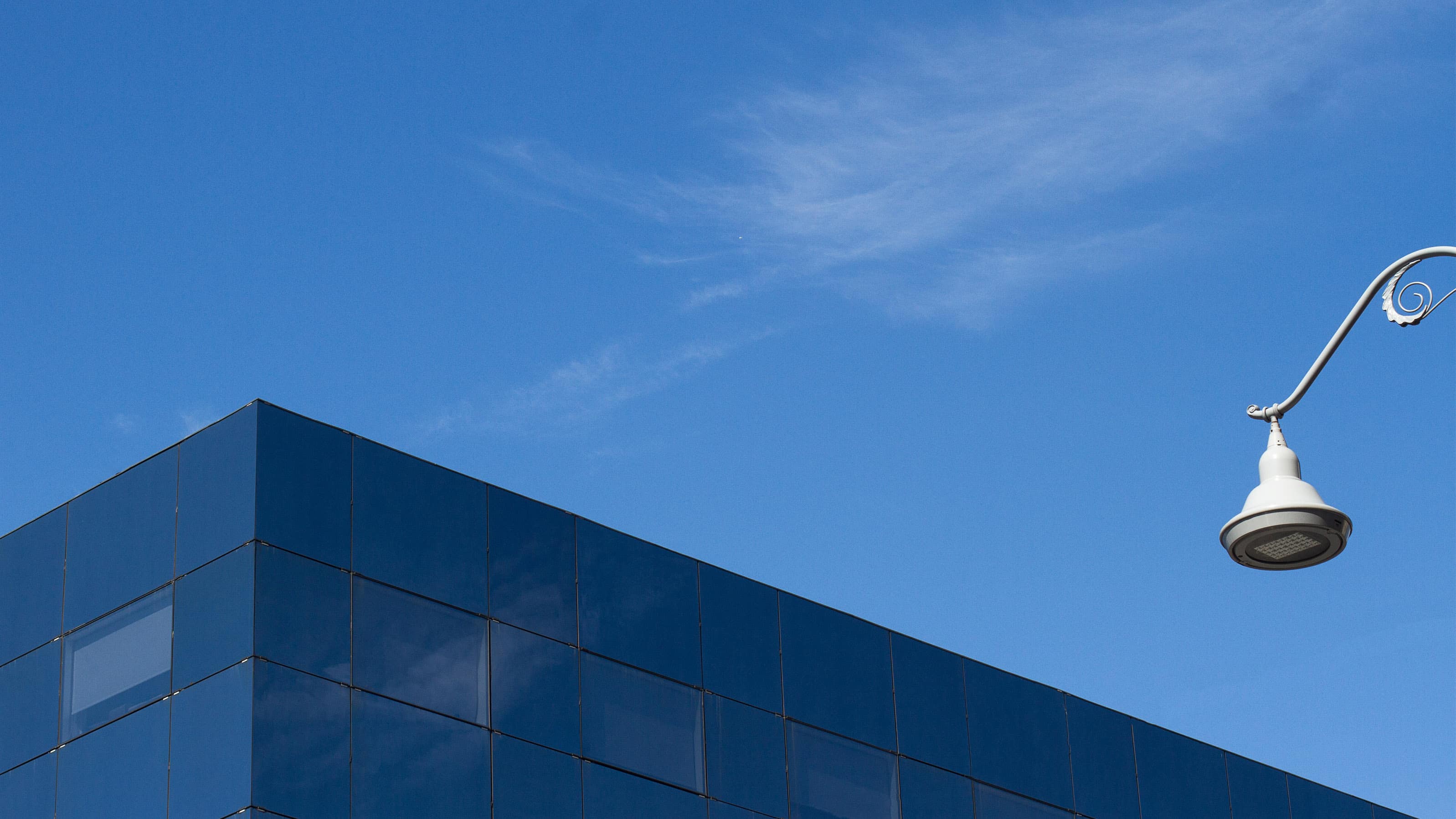
The Smart Lighting industry, despite the economic slowdown caused by COVID-19, is showing great promise for the upcoming years. Many businesses are upgrading their traditional lighting with Smart Lighting Solutions to reap energy and cost-saving benefits. The Smart Lighting market is forecasted to grow from USD 8.2 billion in 2020 to USD 21.7 billion by 2025 at a CAGR of 22.3% in the forecast period. And with the advent of technology, the industry is expected to grow only higher. Here is a brief on what Smart Lighting is and why businesses are transitioning to this technology.
What is Smart Lighting
Smart Lighting is a lighting technology that enables buildings to use energy efficiently by optimizing lighting usage. Powered by technology, Smart Lighting Solutions calibrate various characteristics of luminaires automatically based on user requirements to maximize savings. While users can manually control the lighting systems, Smart Lighting Solutions do not require manual intervention to operate.
Technology behind Smart Lighting
The Internet of Things (IoT) is the core of Smart Lighting Solutions. By enabling multiple devices to exchange information, IoT helps to optimize lighting usage accordingly. The Smart Lighting network consists of a number of sensors, accurate relays, gateways, and many other components to transmit occupancy, time, and daylight information necessary for optimization.
How Smart Lighting benefits businesses
1. High energy savings
While LED luminaires are energy efficient, more than 30% of the energy consumed is wasted if appropriate lighting controls are not used. For businesses and other commercial establishments such as schools, hospitals, etc. where bills reach millions, 30% energy consumption reduction is a considerable saving.
For instance, consider an office space with traditional lighting. The rooms are, most of the time, left with lights switched on until people leave the office. However, with Smart Lighting Solutions, the sensors continuously provide occupancy information and optimize lighting usage based on the use of the rooms. This can also be achieved for desk-level lighting accurately. Hallway lights can be dimmed when no occupancy is detected to further conserve energy. Parking and other outdoor lights can also be managed according to the daylight conditions and occupancy for effective illumination while being efficient.
2. Increases productivity
Lighting plays a crucial role in determining the functions and energy-level of the body. Secretion of Melatonin is what makes people want to rest, and the production of this hormone is closely related to the lighting conditions. For instance, a typical day is observed to begin with low light levels and a color temperature of 2500K. As the day progresses, the light level increases and the color temperature gradually reaches 4000K. Building lighting should reflect this to reduce the melatonin in our body and to begin the day energetically.
Smart Lighting enables businesses to customize lighting according to the time of the day and level of daylight to ensure productivity and mental wellbeing of their employees. In schools and colleges, Smart Lighting can contribute to the alertness of both students and teachers. Smart Lighting’s application in hospitals can establish a relaxing environment to boost patient recovery.
3. Reduces your carbon footprint
All of today’s businesses require energy for operation. Directly or indirectly, this contributes to global greenhouse gas (GHG) emission and global warming. And so, most of the governments have imposed strict regulations to reduce greenhouse gas emissions. The US government has also proposed to reduce 26-28% of its GHG emissions by 2025. But more than the emphasis on regulations, making businesses eco-friendly ensures a sustainable future and helps them in the long run.
4. Lighting longevity
LED luminaires offer a lifetime of 50,000 hours at the least, which in itself is huge compared to the 15,000 hours of CFL and 1000 hours of incandescent bulbs. However, a fourth of this lifetime is not used productively. Smart Lighting Solutions’ optimized lighting usage enables businesses to reduce maintenance expenses considerably.
5. Occupant movement tracking
Since the sensors continuously monitor occupant movement information, the data can also be used to understand how the occupants are using the building in real-time. Integrating with big data analytics, various insights on lighting usage can be gathered to make informed decisions regarding the infrastructure.
Smart Lighting industry growth trends
The commercial Smart Lighting market can be analyzed based on various segments of the industry.
1. Smart Lighting Market: Hardware vs Software vs Services
While the Services segment is forecasted to grow from USD 2 billion in 2020 to USD 6 billion in 2025 at a CAGR of 24.7%, the Hardware segment is forecasted to grow from USD 5.1 billion in 2020 to USD 12.7 billion in 2025 at a CAGR of 20.0%. The Software segment is to grow from USD 1 billion to USD 2.9 billion at 22.3% CAGR.
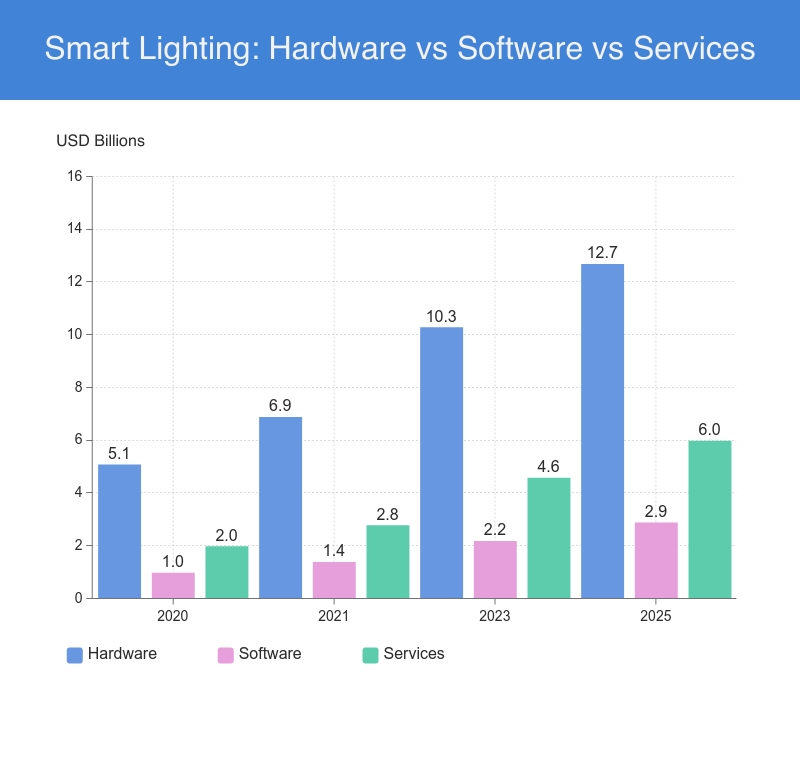
2. Smart Lighting Market: New Installations vs Retrofits
New Installations are forecasted to grow from USD 5.8 billion in 2020 to USD 14.7 billion in 2025 at 20.6%, and Retrofits from USD 2.4 billion to USD 7 billion at 23.7% CAGR from 2020 to 2025.
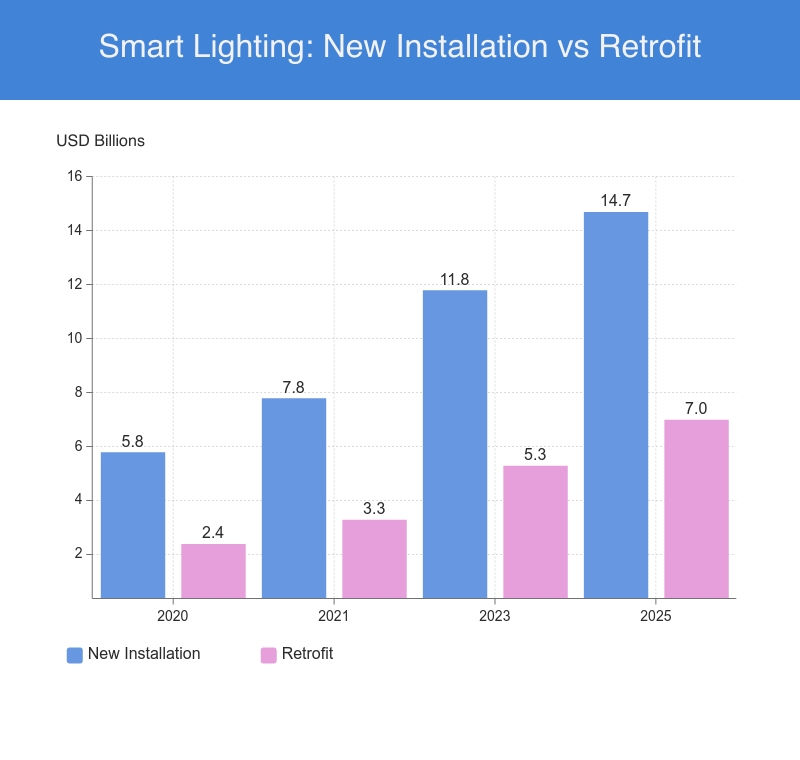
3. Smart Lighting Market: Wired vs Wireless
While the Wired segment is forecasted to grow from USD 5.3 billion in 2020 to USD 13.1 billion in 2025 at 19.6%, and the Wireless segment’s forecast shows growth from USD 2.8 billion to USD 8.6 billion at the highest CAGR of 25.0%.
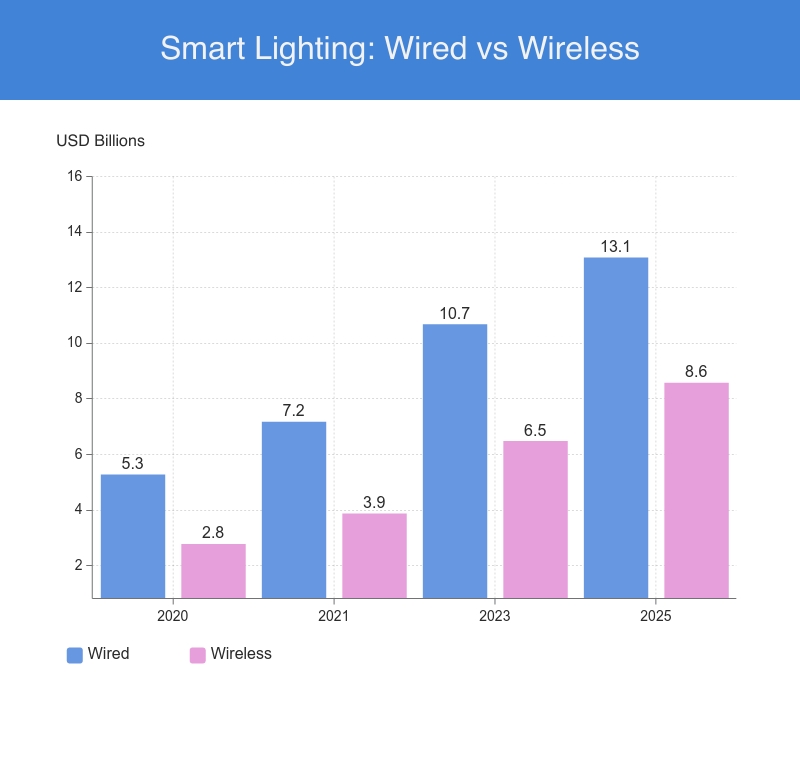
4. Smart Lighting Market: Indoor vs Outdoor
The Smart Lighting Indoor applications segment’s forecast suggests growth from USD 5.3 billion in 2020 to USD 13.6 billion in 2025 at a CAGR of 20.5%, and the Outdoor applications segment to grow from USD 2.8 billion to USD 8.1 billion at a CAGR of 23.4%.
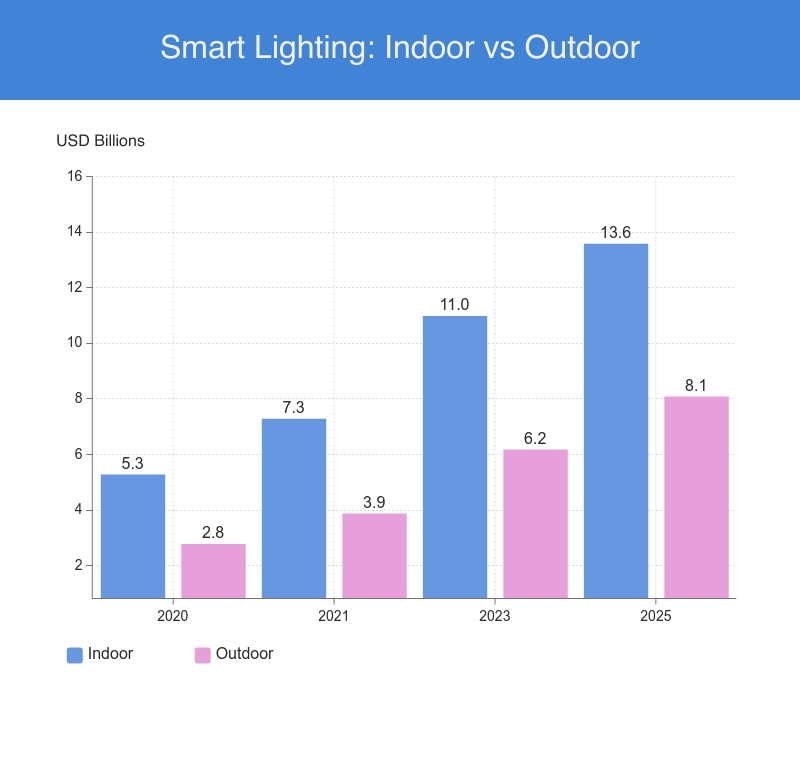
Bottomline
The advent of Power over Ethernet (PoE) and solar lighting solutions has further increased the adoption of Smart Lighting Solutions. However, network components’ interoperability and IoT-based security systems are points of concern for investors and business owners.
Mysupplier has partnered with Enlighted, a Siemens company, to deliver quality Smart Lighting Solutions your business deserves to improve savings. Incorporating technology, we tailor our Smart Lighting Solutions and services to overcome the limitations seamlessly. Our technology solutions also include digital contact tracing, which can help mitigate the risk of COVID-19 outbreaks.


